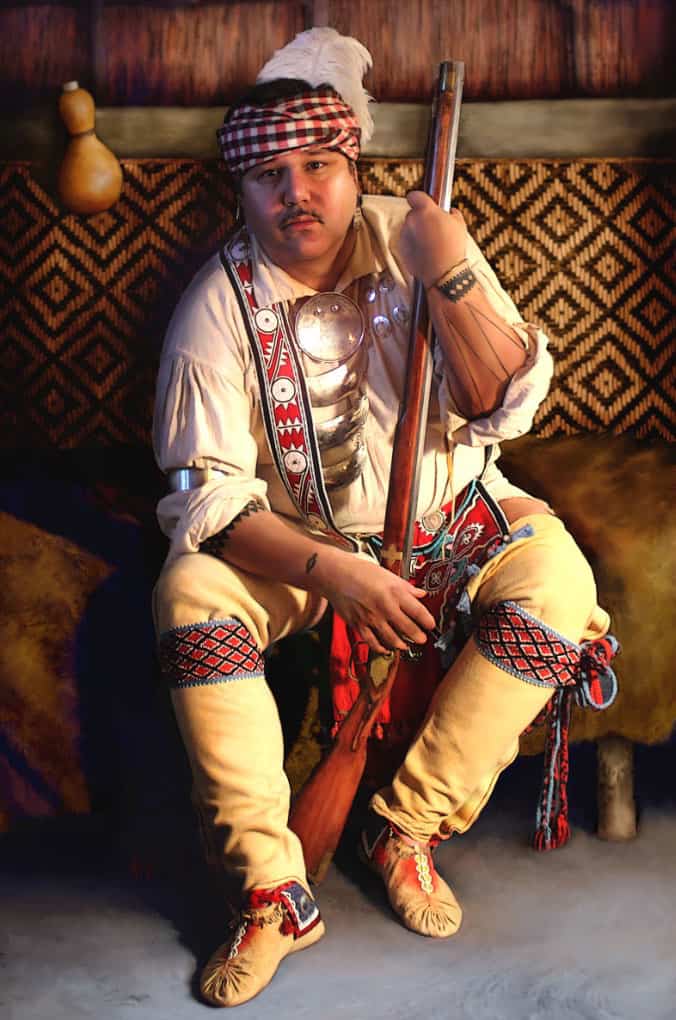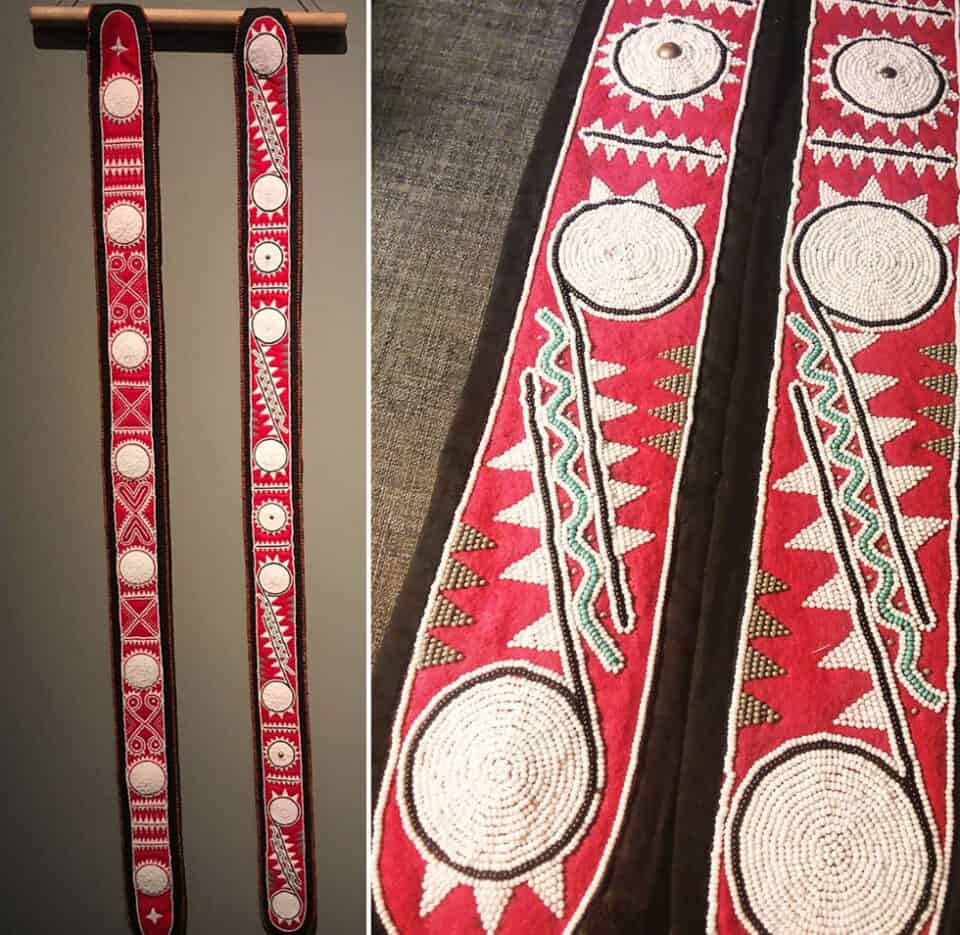
Choctaw Sash, Accession #018439-78
Makers and Masterpieces: Baldric Sashes and Bandolier Bags at the Smithsonian
Iti FabvssaPublished January 3, 2023Over the next few months, Iti Fabvssa will share some of the Choctaw items held at the Smithsonian and highlight the skilled craftmanship still used by the Choctaw community today.
This month, we will be focusing on bandolier bags and baldric sashes.
The southeastern woodland tradition of making baldric sashes and bandolier bags was common among the southeastern tribes in the late 18th century.
The Choctaw shared this tradition with the Alabama, Koasati, Cherokee, Chickasaw, Muscogee Creek, Natchez, Seminole and Yuchi, to name a few.
Each tribe had its own style and embedded meaning. Some of these likely derived from earlier versions of sashes made from bison wool and hand-carved shell beads. Isht vskufvchi (Baldricks or Baldric sashes) were typically made of trade cloth and featured wool applique edged with intricate beadwork using glass trade beads.
Each unique sash held deep symbolic meaning for the maker in both its design motif and significance, often employing curvilinear lines to create suns, moons, spirals and other dynamic forms.
It is thought that the X and O design could resemble stickball sticks and the ball of kapucha toli (stickball), but this varied from region to region and maker to maker.
Makers used primarily white, black or blue seed beads but later incorporated more colors into their work as they became accessible. Sashes were typically worn by tribal members of high status in their community, including men and possibly women.

Bandolier bags can be seen as an extension of this tradition.
While baldric sashes served as a form of adornment, bandolier bags were utilitarian in purpose yet just as intricate as the sashes themselves. Of note, it is rare to find Choctaw bandolier bags in collections.
Sashes like the ones at the Smithsonian (pictured here) were documented in photographs of Choctaws in the early 1900s but collected as early as the late half of the 1700s.
Many institutions worldwide have fine examples of these beautifully designed Choctaw textiles in their collections.
Museum partnerships offer a unique opportunity to examine the techniques of our ancestors and learn what decisions went into each piece. This is incredibly helpful for the continuation of this tradition.
Sam Stitt, a Choctaw tribal member based in Spokane, Washington, finds this knowledge crucial to his revitalization efforts.
An early goal of Sam’s was to create full regalia worn in the late 1700s to early 1800s, completely adorned, as a warrior of high status.
He fielded questions about this era of Choctaw material culture from his community and decided to add this creation to his ongoing community outreach to teach about Choctaw culture.
Understanding this textile tradition was shared among the southeastern tribes, Sam dove deep into online collections to research and examine many styles to learn about their construction, design motifs and the materials used.
However, there is nothing like seeing it up close. Sam says he benefits when he can get close-up photographs of details or even the back side of a piece from someone working in collections. It’s the finite details that help understand some of their choices.



Sam works with traditional tools and materials in his textile and metalsmith creations. However, he avoids copying from other artists, choosing instead to make it his own.
“I have always had ideas in my mind of designs to create or different ideas to try out. And over time you evolve as an artist, experiment, and keep what works…I think over time, I have developed a recognizable design that is my own,” said Stitt.
He had some suggestions for those who want to learn. First, Sam says it’s important to reach out to artists for help. They can offer advice on the basics, which materials to use, teach the initial steps and be honest about the investment it takes (both time and monetary).
Second, Sam encourages students to take it slow at first. Complete a small project that is simple to get used to working with the materials. Finally, keep some first aid supplies handy to plan for safety issues, especially when working with metal.
As an artist learning about traditional Choctaw arts, Sam is part of a growing community of artisans that network and support one another in their revitalization efforts. Sam credits this support for being a critical part of his creative process and success as an artisan.
“I need someone to bounce ideas off of,” said Stitt. “Even questions about fabricating and design.”
Sam continues to expound on his skillset and concentrates primarily on metalsmithing at this time. He strives to make his silver gorgets distinctly Choctaw.
Next month, Iti Fabvssa will continue to share objects from the Smithsonian and highlight the work of a father and son who continue to pass on their generational knowledge as silversmiths.